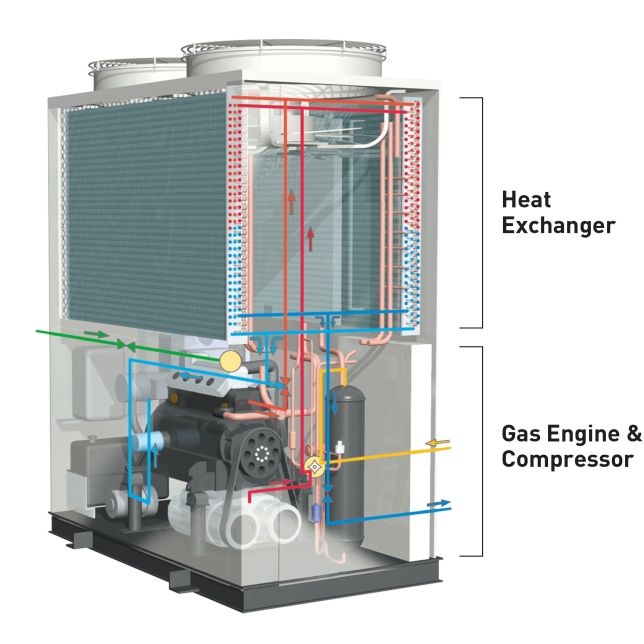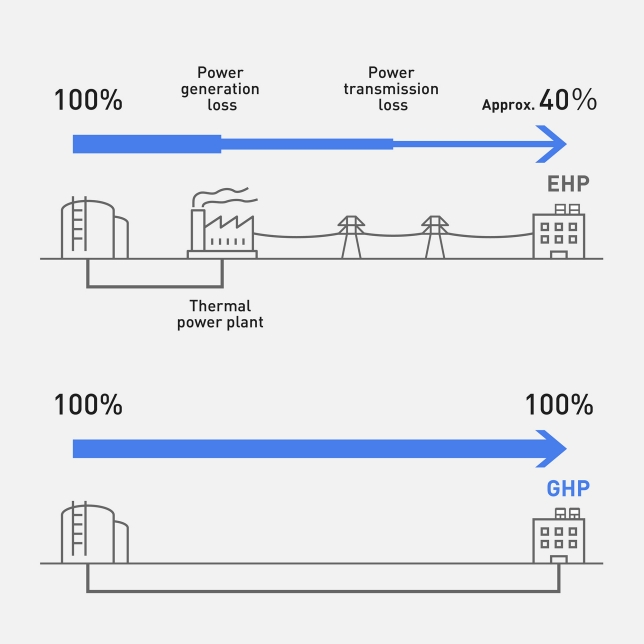2-Way GE3 Series
An Environmentally Friendly Solution that Satisfies Your Requirements

Please Select Your User Type

Features
What is GHP?

Cost Reductions through Use of a Gas Engine
Significantly Reduced Power Consumption

Significant Cuts in Power-Receiving Equipment Costs

Waste Heat from Gas Engines can be Used for Domestic Hot Water (DHW)

Environmentally Friendly
Low Environmental Impact

Low CO₂ Emissions

Low NOx Emissions

Up to 64 Indoor Units can be Connected

Specs
Maximum 60 HP combination
Domestic Hot Water (DHW) priority setting
Operating range in heating down to -21°C and up to +24°C for air to water system
No defrost cycle
Capacity ratio: 50-200% (16-25 HP), 50-170% (30 HP)
Combination capacity ratio: 50% of smallest outdoor unit capacity - 130% of total capacity of outdoor unit combination




































